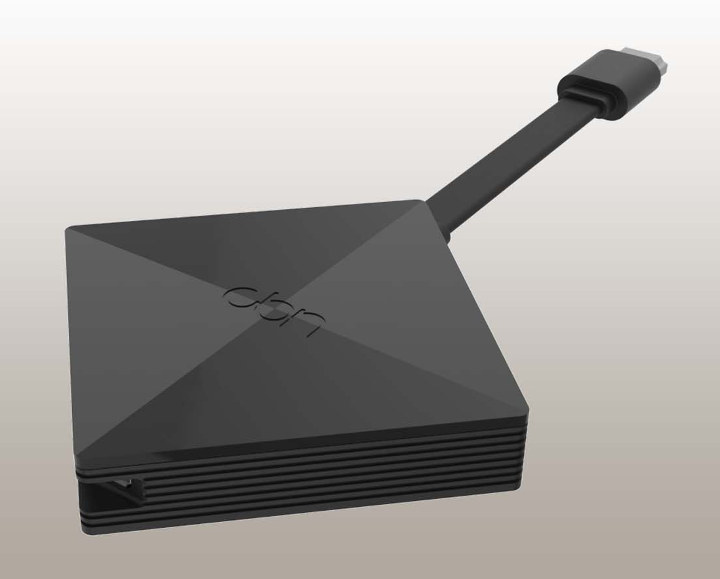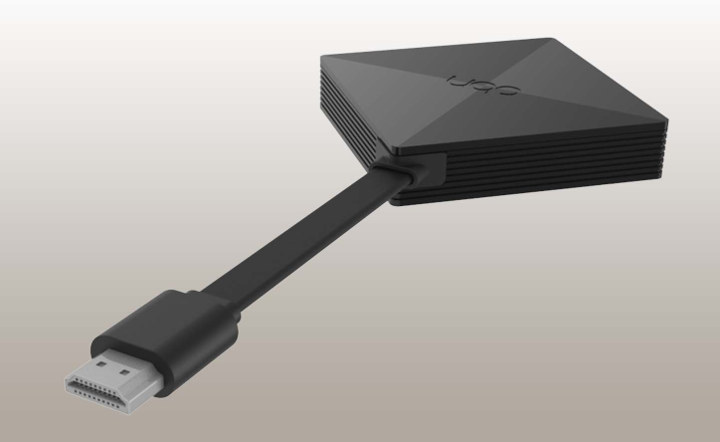A few days ago, the U-boot & Linux source code for Realtek RTD1296 processor was released, and when we checked out the code we found out references to a completely new Realtek RTD1619 hexa-core Arm Cortex-A55 processor, as well as code for the previously announced Realtek RTD1395 processor.
The CES 2018 announcement was really short on details though: “Realtek’s Android & RDK STB platform (RTD1395) supports 4K UHD, HDR, an advanced DRM security system, and OTT integration, giving MSOs a reliable SoC partner”. We now have more details thanks to Taiwan based Compal Broadband Networks and their VIP1111 4K IP set-top box powered by RTD1395 processor. VIP1111 TV box specifications:
VIP1111 TV box specifications:
- SoC – Realtek RTD1395 quad core Cortex-A53 processor, Arm Mali-470 MP4 GPU
- System Memory – 2GB DDR4 (4x 512MB x 16bit)
- Storage – 8GB eMMC Flash
- Video & Audio Output – HDMI 2.0
- Video Codec – HEVC 4Kp60+2Kp60, VP9.2 4Kp60, HDR10
- Connectivity
- 802.11 ac/abgn Dual Band 2.4G/5G 2×2, Wave-2 compatible with MU-MIMO (Optional External Antenna Available)
- Bluetooth 4.1
- Power Supply – 5V DC/1A through MicroUSB port
The main novelty of the processor appears to be the Mali-470 MP4 GPU, which should offer a lower cost SoC compared to the Mali-820 MP3 GPU found in RTD129x processors. It’s unclear which other features – if any – have been removed or modified to bring the cost down, but based on the original announcement, I’d suspect HDMI input and SATA interfaces are gone since it is not needed for “4K OTT TV boxes”.
 That model is pretty basic in terms of ports, so it looks mostly for IPTV / video streaming, as there’s no USB port, nor the HDMI input port found in most of RTD1295/RTD1296 devices. It should be used by IPTV companies.
That model is pretty basic in terms of ports, so it looks mostly for IPTV / video streaming, as there’s no USB port, nor the HDMI input port found in most of RTD1295/RTD1296 devices. It should be used by IPTV companies.
The company also explains the device is “available under both Android / RDK-V operating system”. At first, I thought I had never heard about RDK-V, but the overview offers some insights:
The RDK (Reference Design Kit) is a standardized software stack with localization plugins created to accelerate the deployment of next-gen video products and services by multichannel video providers (MVPDs). It enables MVPDs to standardize certain elements of these products and devices such as set-top boxes, gateways, and converged devices, and to easily customize the applications and user experiences that ride on top. It sits below the MVPD application and services layer and provides a common interface to SoC’s, acting as a universal SoC adapter. This standardized stack provides a common method to manage complex video functions such as tuning, conditional access, DRM, and stream management.
The RDK is supported by more than 200 licensees including CE and SoC manufactures, software developers, system integrators, and MVPDs from around the world. It is administered by the RDK Management LLC, a joint venture between Comcast Cable, Time Warner Cable, and Liberty Global. The RDK software is available at no cost to RDK licensees in a shared source manner, and RDK community member companies are encouraged to contribute software changes and enhancements to the RDK stack.
I vaguely remember about the “Comcast RDK” being mentioned a few times by Linaro, but never really looked into it as it is only opened to licensees.
It should be noted VIP1111 name looks very similar to VIP1113 made by Arris International, so it’s not impossible VIP1111 is also related to the company. We don’t have price information for VIP1111, and likely never know if it does indeed target business customers.
Thanks to Redneckerz for the tip.

Jean-Luc started CNX Software in 2010 as a part-time endeavor, before quitting his job as a software engineering manager, and starting to write daily news, and reviews full time later in 2011.
Support CNX Software! Donate via cryptocurrencies, become a Patron on Patreon, or purchase goods on Amazon or Aliexpress




